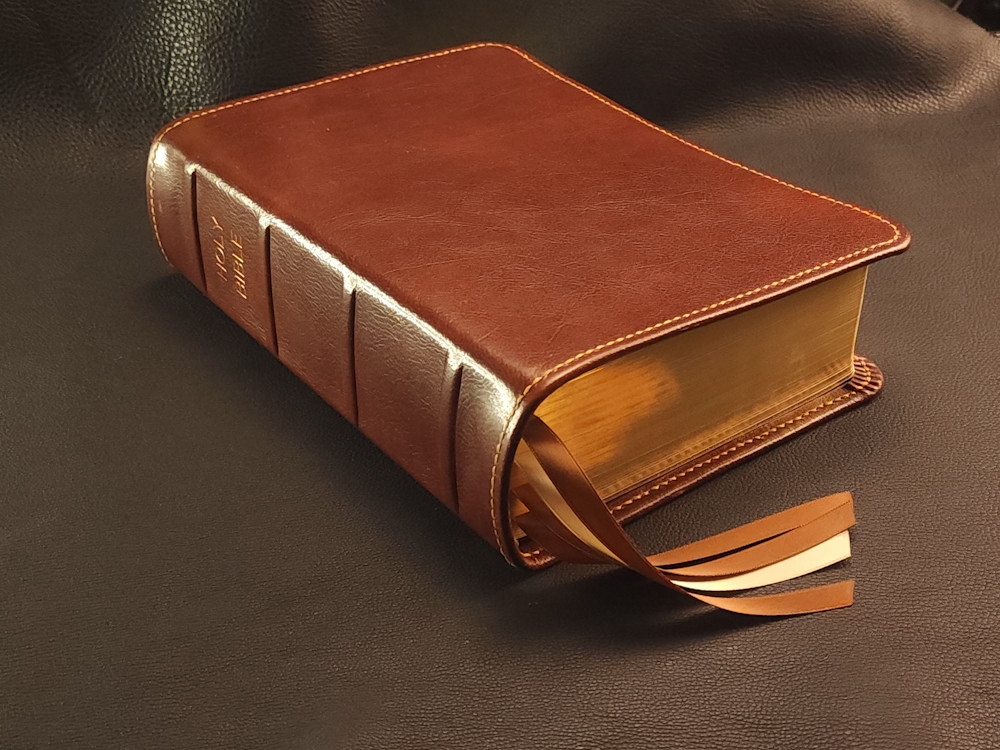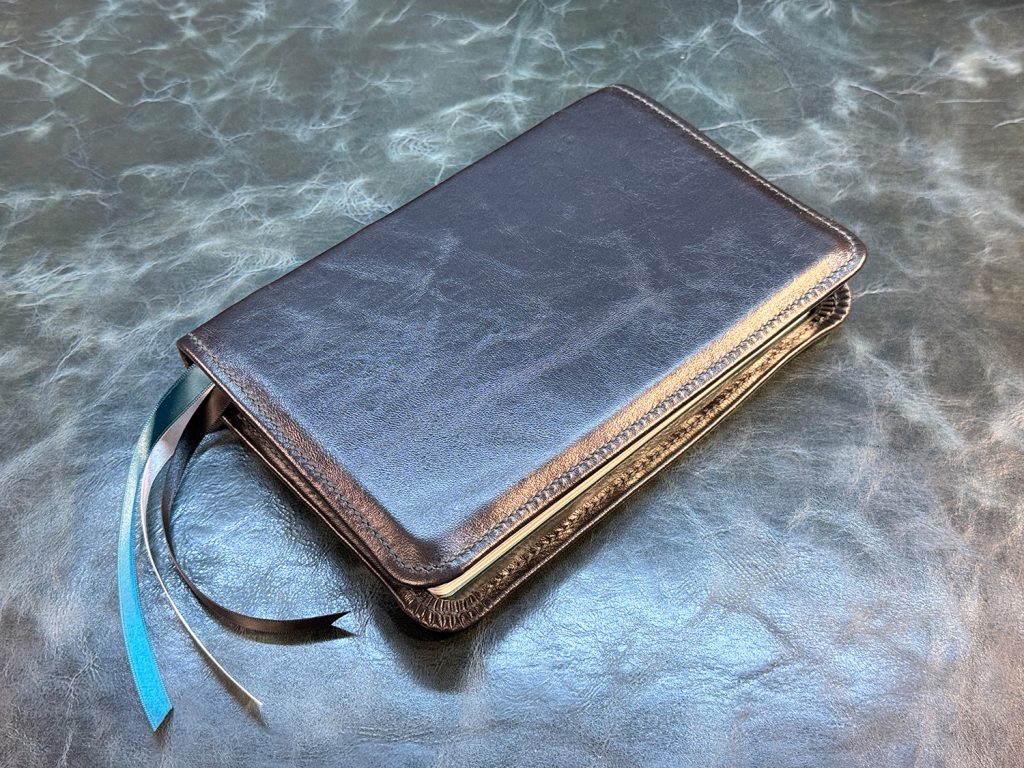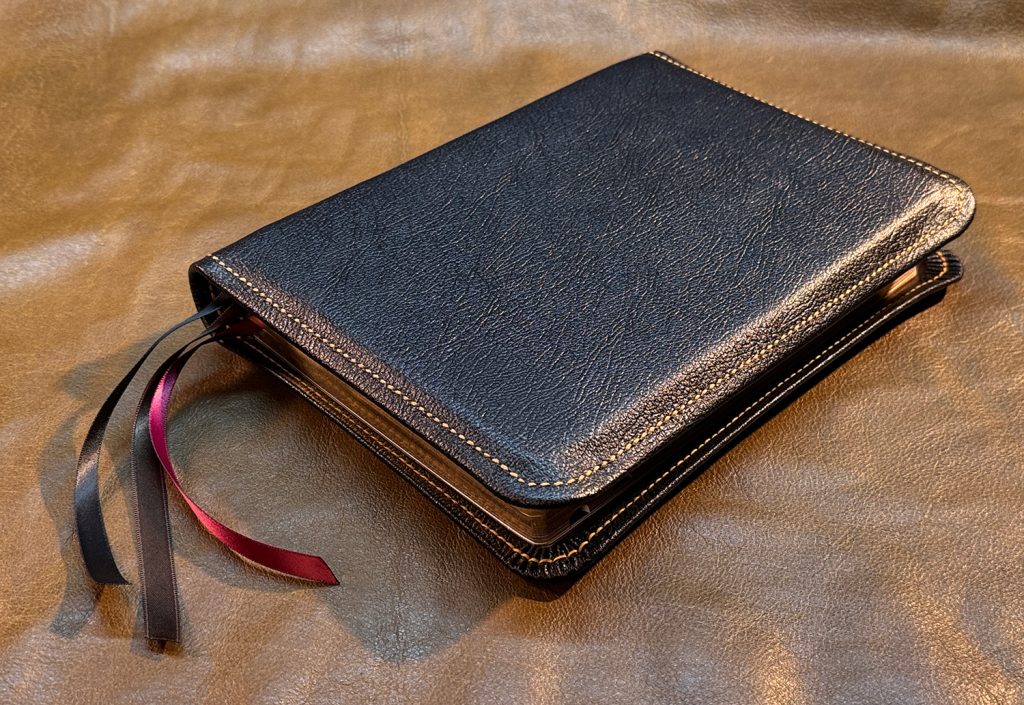If you’ve ever picked up a Bible with soft leather flaps that extend beyond the page edges, you’ve already seen one of the most enduring bookbinding traditions still used today. This style is called a yapp, and its history traces back to one very practical moment in Victorian England.
The Story Behind the First Yapp-Edge Bible
In the mid-1800s, London bookseller William Yapp was known for producing pocket-sized Bibles and devotional books. These volumes were meant to go everywhere with their owners. People carried them in coat pockets, satchels, and traveling cases, pulling them out throughout the day for reading or meditation.
But there was a problem: pocket Bibles wore out fast.
Coal dust, moisture, and everyday life in industrial London were rough on the delicate Bible paper. Customers complained that the page edges were fraying, the gilding was getting scratched, and fine dust was settling into the fore edge.
Mr. Yapp wanted a solution.
He approached his binder and asked for something simple but innovative: “Make a leather cover that overlaps the edges—just enough to protect the pages.” The binder extended the leather slightly beyond the text block and curved it inward, forming a soft, flexible “lip” around the fore edge of the book. The design worked beautifully. Readers loved the way it kept dust out, shielded the page edges, and felt comfortable in the hand.
Before long, customers were asking specifically for “Mr. Yapp’s Bibles”, and the term yapp edge (also called just yapp) officially entered the world of bookbinding.
What Is a Yapp on a Bible Cover?
A yapp refers to the soft leather overhang that extends beyond the text block of a Bible or book. Unique to soft-cover leather Bibles, it protects the page edges, adds flexibility, and gives the book a classic, handcrafted appearance.
Today, yapp edges are most commonly found on higher-end Bibles and custom leather bindings. They come in three main types:
- Standard Yapp
- Semi Yapp
- Full Yapp
Each style offers a different level of coverage and visual impact.
Standard Yapp

A standard yapp features a subtle leather extension. At Schaeffner Co, our standard yapp Bibles include covers that extend around 3/8″ beyond the page block.
Characteristics of Standard Yapp
- Light overhang
- A gentle inward curve
- Protects page edges without a dramatic look
- A traditional profile that still feels clean and modern
Great for:
Readers who want a classic binding with added durability.
Semi Yapp

A semi yapp increases the extension over the cover. We extend our semi yapp covers so when they are folded over, they cover about half of the width of the page block, typically around 1/2″, creating a more noticeable wrapped effect.
Characteristics of Semi Yapp
- More pronounced protection
- A richer, more traditional silhouette
- A soft, flexible feel that gives the cover movement
- Protects gilding and page edges more effectively
Great for:
Those who want a balance between sleek design and enhanced protection.
Full Yapp

A full yapp is the most dramatic and traditional version of yapp. When we create a cover with a full yapp, we extend the leather by about half the thickness of the page block. On our full yapp Bibles, the front and back covers will typically touch when folded over the edge of the text block.
Characteristics of Full Yapp
- Maximum protection for delicate page edges
- A classic, old-world look reminiscent of 19th-century bindings
- A soft, enveloping “wrap” feel in the hand
- Highly sought after by collectors and premium Bible buyers
Great for:
Readers who value heritage aesthetics and the highest level of page-edge protection.
Comparing Standard, Semi, and Full Yapp
Here is a simple way to visualize the differences between these cover styles:
- Standard Yapp: Minimal overhang, subtle, protective
- Semi Yapp: Moderate overhang, balanced, elegant
- Full Yapp: Large overhang, traditional, luxurious, most protective
Each has its own charm, and the right one simply depends on how you prefer your Bible to feel and function.
Why Yapp Edges Still Matter
While the original design was created to protect pocket Bibles from dust, wear, and the grime of Victorian streets, modern readers love yapp edges for many of the same reasons:
- They protect art-gilt and gilt edges
- They prevent page curling and fraying
- They offer a beautiful, classic look
- They soften the way a Bible feels in the hand
- They signal craftsmanship and traditional binding heritage
In the world of fine Bible rebinding, yapp edges remain a frequently requested feature. They are not just for functionality, but for the unmistakable aesthetic they add.
Whether you’re considering a custom Bible with a standard, semi, or full yapp edge, feel free to reach out. We are always happy to help you choose the style that feels best and matches the way you read, carry, and enjoy the Scriptures.

